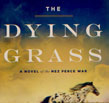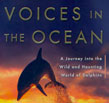 |
 |
11-28-08: A Close Look at 'The Autopsy and Other Stories' By Michael Shea : Worth Your Valuable Time (and Money!)
It was almost five months ago that I saw the ARC for 'The Autopsy and Other Tales' (Centipede Press; Fall 2008 ; $95) by Michael Shea. At the time I was wowed both by the content and the intent.
Let me explain.
As I mentioned in the earlier article, Shea's Arkham House collection 'Polphemus' was a sort of landmark in my reading experiences. That's because, and I just realized this now, as I type, like Barker did in 'The Books of Blood', Shea in 'Polyphemus', offered a startling variety of stories that demonstrated the expansive, inclusive nature of speculative fiction. Shea melded horror, science fiction and fantasy with innovative concepts and great writing. And the collection included great illustrations by John Stewart.
But 'Polyphemus' has been out of print for years now, and Shea has written lots of new stories that fit in with those works thematically but aren't in the original collection. So content-wise, 'The Autopsy and Other Tales' is long overdue. And it's pretty damn peerless.
But some books are more than words and the impeccable art, art direction and production value make 'The Autopsy and Other Tales' a book that's actually worth the $103.81 I paid for it at Borderlands Books. I knew from the ARC that Jared at
Centipede was folding in the illustrations from John Stewart. What I didn't know was that he was adding in three or four more layers, many in color and all beautifully produced and quite evocative of the creepy, crawly, unky-gunky milieu that Shea explores so excellently with his prose. The book is a treasure trove of cunningly placed and sculpted photos and drawings. Sure, many of them are probably from the public domain, but you know, it just does not matter. An artist designing a book, and the un-credited designer of this book is to my mind an artist, must make do with what's to hand. The book design here is stellar, and actually manages to live up to the prose and the price. This is the sort of book that I'll put next to my Scream/Press 'Books of Blood', or, actually, 'Polyphemus', from whence it came. The covers are heavy black leather, sans DJ, with a lovely embossed anatomical diagram. The pages are nice and thick. Printing and proofing are peerless. If you have ever been inclined to spend this much money on a book, here is a book that is clearly worth the money. And if you have never thought you'd spend that much money on a book, now is a good time to start. 'The Autopsy and Other Tales' is an outstanding limited edition; it's what limited editions should be about.
|
|
11-27-08: The Post-Post World: 'Emily Post: Daughter of the Golden Age, Mistress of American Manners' by Laura Claridge
|
|
Emily on CBS radio in 1932. |
What makes day-to-day life bearable? What keeps us from the abyss? Arguably, it's the work of a jilted Jazz-age wife, a woman forced out of comfort and into a world where women couldn't vote — but they could write. For me, the name "Emily Post" has always conjured up a vision of fine dining, with white gloves. Genteel music in the background, clipped, precise voices requesting that one guest pass a salt shaker, while another tells an amusingly bland story. The image unfolds without effort, and as well, without information. We live in a post-Post world, and the long-term implications of Post's work are to my mind much broader than one might expect. After all, one would expect that a gentleman who understood the importance of table manners would be less likely to rob a bank, or order a nuclear strike in a time of war. One would hope.
And in order to understand where, in effect, we, come from, you'd want to read 'Emily Post: Daughter of the Golden Age, Mistress of American Manners' (Random House ; October 18, 2008; $30), by Laura Claridge, a five-hundred page-plus biography that reads like a novel; but for, of course, the fact that the story it tells is more outlandish than any a novelist might dare to conjure. Emily Post may have defined manners, but her life was neither safe nor sedate, and in some ways, not even particularly well-mannered.
Post's life reached across times of staggering change. She was born just after the Civil War, to Bruce and Marion Price, her father a well-to-do architect in Baltimore. The family moved to New York, and as she grew up she hobnobbed with the greatest and boldest people of her time; J. P. Morgan and Alva Vanderbilt. She had her coming out party in 1889 at Delmonico's where she met Edwin Post. She married him, but the union blew up in scandal, the sort that made the front pages of newspapers. It's hardly what you'd call the obvious "origin story" for the superheroine of manners. She set out on her own, and became a novelist, spending her time with Mark Twain and Edith Wharton. But it was at the age of 50 that she decided to change the world, and wrote a book called simply 'Etiquette'. The "changing the world" aspect proves to be more obvious in hindsight, of course.
Claridge is a skilled biographer, who will grab you with the first words of her story and keep you involved as much by sheer writing skill as by the wild life she chronicles. The joys of the great biography are the joys of a great novel — strong characters and amazing lives, well-rendered in clear prose. The real trick is to find the story in a life, the through line that takes you from the beginning to the end, the plot that unfolded through the days of the lives. In Post, Claridge has an ideal subject, a woman whose influence is universal but still rather invisible. It all has to do with the way we learn manners, the way we learn to live our own lives. We like to think we know everything that goes into our lives, but there are influences that run too deep to be easily seen. It's up to writers like both Post and Claridge to surface those subterranean currents, to bring forth the origins of our codes of behavior. It's easy to forget where we come from and why we act the way we do; simply because it makes all our lives better.
|
|
11-26-08: Dean R. Koontz Knows 'Your Heart Belongs to Me' : Skip A Beat
Damn, I remember buying Dean R. Koontz's 'Watchers' back in the day. I got it at Change of Hobbit on Santa Monica Boulevard, and after reading it went back and bought a hardcover copy of 'Strangers'. 'Watchers' was a breakthrough for me, a science fiction novel that read like a mainstream novel in many ways, with an appealing hero and a couple of great critters. It just about broke my heart when they found The Other's little stash of toys and even now, what, more than 20 years later — it still does.
Of course, so much has happened in the interim. They've made more terrible movies based on Koontz books than you could ever have imagined. I mean, the man should write a horror novel about having perfectly good and even outstanding horror novels ruined six ways to Sunday by the spectacularly inept folks in charge of such things. Even the should-have-been-good mini series seemed turgid. It's just that the reading experience of a Koontz novel can be so different from the movie version. This is why we read instead of watching movies, 'cos the movies like, suck.
And not to put too fine a point upon it, but Koontz himself overdid his brand. I remember reading 'Mr. Murder' and grinding my teeth in disappointment. It just seemed tepid compared to his best work. Though, again to be fair, I enjoyed the heck out of 'Fear Nothing', and the sequel, 'Seize the Night'. I think there was supposed to be a third in the series, but if there was, I never caught wind of it.
Since then, though, and how many Dean R. Koontz's are there? — Koontz has kept on keeping on, following through with the Odd Thomas books, which I let pass me by. I think I might actually like them, but like many a compulsive reader, I'm unwilling to start a story already in progress and unlikely to visit the past when the future is chock-full o' books. So instead, I find myself looking at the latest standalone, 'Your Heart Belongs to Me' (Bantam Dell / Random House ; November 25, 2008 ; $27), and wondering if I've guessed the gotcha before I cracked the book. Here's the setup; Ryan Perry has it all, and a bum ticker. One heart transplant later, he's got it all again, and more — someone who is sending him threatening letters, the thrust of which is the title of the novel. Okey-doke.
So, one wonders, just how many made-for-TV movies and Harlequin-style suspense-mances have hung their hat on this peg and why, at this juncture, has Koontz added his. Now it's easy to give Koontz a hard time. He writes a lot and the law of statistics suggests that there's going to be a quality bell-curve. That said, he does write a lot, and he's actually a damned good writer. He can create a scene in your brain faster than a Hollywood wunderkind with a next-gen digital camera. He writes prose that's clean and creates characters that in spite of their general perfection, you really, really like. In fact, that's one of Koontz's great strengths; he creates old-fashioned good and evil humans and — when he's on his game — it really works. You get caught up in their lives. Now, for this novel, it's really quite engaging. Koontz can do that. Pick it up and read it and you'll find the nice rhythms of the dialogue, the sweet and sour stuff of life just flows off the page. To be certain, Koontz does stack the cards against himself — in my book, at least — and then precedes the play the hell out of the hand he's dealt himself. If anyone can heat up this baloney sandwich, it's Koontz. He's been waiting umpty-ump years for that there breakthrough novel, which, alas, in many ways, was 'Watchers'. I'll give him this; we're all still watching, he's still writing, and we're still reading.
|
|
11-25-08: Simon Hopkinson offers 'Second Helpings of Roast Chicken' : Stories of Food
We like our cookbooks to be encyclopedic. Between the covers, we want them to tell us everything we need to know about cooking. But of course, that's not possible, so we get specialized cookbooks instead, which focus on say, Cooking Beans. Or Vegetarian Soups. Or Meat Pies. (I hope there's a Meat Pies cookbook. Yummy!) Still, though they hone in on one subject, these cookbooks are encyclopedic in nature. They aspire to tell us everything and are organized by subject. One suspects that the authors may have found themselves including recipes that might not particularly be to their taste, simply because in an encyclopedic cookbook, one must of necessity include such recipes.
Which brings us to 'Second Helpings of Roast Chicken' (Hyperion Books ; October , 2008), by Simon Hopkinson, apparently a follow-up to his first book, 'Roast Chicken and Other Stories'. (Yes, that one is in my cross-hairs.) The difference here is stark; rather than encyclopedic, 'Second Helpings of Roast Chicken' is idiosyncratic. It's a not any kind of cookbook other than one written by Hopkinson. It's both sparse and rich, simple and complex. It's a cookbook (shades of Damon Knight, eh?) that is meant to be read like a regular book, and a regular book with lots of recipes.
Here's the game plan. Hopkinson (who is British and lives in London) gives you a lot of chapters; each chapter is the name of a basic ingredient, like "Chicken", "Rhubarb", "Mint", "Scampi", or "Brisket". For each he offers a wonderfully written little introduction, then three recipes. The chapter-head ingredients are alphabetically ordered. Everything is neat, tidy and very idiosyncratic.
Hopkinson's recipes are not simply a series of instructions. There's a care to the prose that makes them pleasurable to read even if you're not going to be preparing the dish; and some dishes are, to be quite frank, fairly complex. That doesn't mean you can't make them, but if you're looking for a cookbook where every recipes uses five ingredients – this isn't that cookbook. But then, some recipes are that simple. One of the joys of 'Second Helpings of Roast Chicken' is that you never know what you're going to find when you turn the page.
Production values are important for a cookbook, so you can be happy that they're quite high here. On one hand, this doesn't even look like a cookbook. It's novel-sized. The cover is rather demure, but the image is also printed on the end-boards, which is sort of cook-booky. Even the layout of the recipes on the inside is more standard-non-fiction/novel-look than you're used to finding in "The Meat Pie-o-Pedia"; more prosey and less instruction manual. The book includes lots of classy painted illustrations as opposed to garish food photos. It comes with a dust jacket, which, if you're going to use it in the kitchen, would best be covered. It's a nice little book that offers one man's very informed vision of food. Sometimes it's nice to sidestep the encyclopedia.
|
|
11-24-08: Lincoln Child Unplugs the 'Terminal Freeze' : Killing Machines
Why dont the scientists in science fiction novels ever read the science fiction novels that would help them understand their own situation? Or even catch the movies? Well, you can be thankful that's the case, at least if you like a good monster novel. Otherwise, say, if the scientists of 'Terminal Freeze' (Doubleday / Random House ; February 24, 2009 ; $24.95) had read the John W. Campbell classic "Who Goes There?", or even seen one of the two movies based on the story and both titled The Thing, they would have known it's a bad idea to unthaw a frozen arctic ice monster. Thankfully for us monster-loving readers, that part of their cultural education is lacking.
'Terminal Freeze' is a straight-ahead, no-nonsense monster novel from one of the two men who brought us 'Relic', and he's back in good form. Now, as Joe R. Lansdale once so swimmingly put it, "This is not a book of big thinks." If it was, nothing would happen, but that's definitely not what we want with a Lincoln Child monster novel. We want pace, smarts, a cool monster and enough bodies to keep us entertained.
We're always told that character counts, but few writers who work in the monster field realize that extends to the monsters themselves. Child does know this, and that's what sets this book apart. His critter is not simply a killing machine, which would be frankly kind of boring. It's smart enough to want to play with its food, which makes all the difference on every level; it makes the monster a character and a player in the novel. That in turn makes for a more compelling page-turner, and aids in the prevention of rational thought, often necessary when your literary oeuvre is unfrozen arctic monsters.
Child brings a lot of other helpful attributes to his novel, mostly in terms of his ability to incorporate bits and pieces of this week's scientific research into the plot. He aalso knows how to put together a prose set-piece so that we can see every tipped-over chair, hear every hushed breath and agonized scream, and feel the first spasms of pain as teeth meet flesh — and the teeth win. Now, I'll admit it, I'm a sucker for a good monster novel. It might seem like they would be easy to write and easy to find, but that's not the case. I guess in too many would-be monsters novels, the scientists read monster novels and what might have been an entertaining blood bath is averted. I just hope that they're giving this one away up in at those research stations. One hopes to read good monster novels — not live in them.
|
|
|
|
|
|
|
|
 |
|
|
|




